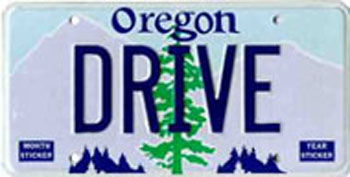Following a DUI breath test failure or breath test refusal in Oregon, or following a DUI criminal conviction in Oregon, most drivers are eligible for an Oregon Hardship Permit (sometimes incorrectly but informally referred to as a “Hardship Licence” or “Work Permit”). These permits are available through the Oregon DMV, and they allow some limited driving within Oregon.

Oregon hardship permits generally allow drivers the following freedoms:
- To drive to and from work,
- To drive in select Oregon counties while working and on-the-job,
- To seek employment in select Oregon counties,
- To drive to and from alcohol or drug rehabilitation program meetings,
- To drive to and from regularly-scheduled medical appointments for treatment,
- Grocery shopping,
- Driving yourself or your children to school, and
- Caring for elderly family members.
Will I Need Proof of Insurance For An Oregon Hardship Permit?
Yes, and not just any type of automobile insurance. Along with the hardship permit, driver’s must provide an SR-22 certificate. An SR-22 certificate is essentially written proof from an Oregon-licensed insurance company indicating that they are aware of the DUI on your driving record, and that they will provide at least the minimum required limits of coverage for “future responsibility.”
If a driver with a driver’s license suspension wants the hardship permit to allow travel to and from work, the driver will need a letter from the employer. The letter should not be a character statement or vouching letter (e.g. “John Doe is a great employee so please give him a hardship permit”) but rather a straightforward letter indicating the dates and times the employee works, the location of employment, whether or not the employee drives while on the job (e.g. to run errands, make sales calls, travel between different job sites or locations), whether the employee drives a state-owned or employer-owned vehicle, and which counties the employee will be driving (the counties must all be in Oregon and must connect). Keep in mind that the hardship permit typically only allows an employee to drive to work and then home (Point A to Point B, then back to Point A). If the employee drives while on the job, there is a great deal more freedom allowed and the employee is not confined to a particular road or area. Theoretically, an employee could drive throughout the whole state of Oregon while on the job– provided that the job duties take the client into all applicable counties.
If a driver is unemployed– or as is often the case, the DUI conviction or license suspension cause the driver to become unemployed– the driver can obtain driving privileges with a hardship permit, in order to look for work. The driver needs to put down all the counties in which they are seeking work, and the permit will be valid for 120 days.
How Do I Apply For An Oregon Hardship Permit?
It’s really a multi-step process. If you’ve been convicted of DUI, you’ll need to have an Ignition Interlock Device (IID) installed and show the DMV proof of that installation. If you’ve only been suspended due to a breath test failure or breath rest refusal (i.e. an administrative driver’s license suspension), then you will not need to install an IID yet. You then need to fill out a hardship permit application and mail it to the DMV headquarters. They will later mail you a letter which you take down to your local DMV branch to have a new license issued. At the time you send in the application, you also need to pay the required fee, and send proof of your SR-22 coverage.
For reference, here is a link for you to download the official PDF Oregon DMV Hardship Permit Application. Although the form is rather straightforward, you should speak with an attorney before you complete and submit the application to the Oregon DMV. There is a certain level of detail required or issuance of the permit may be delayed or rejected. Also, you want to make sure that the permit is not unnecessarily restricted in where or when it allows you to drive.
Limitations of Oregon Hardship Permits
The Oregon DMV does not have the ability to issue hardship permits or grant driving privileges in other states while a driver with an Oregon driver’s license is suspended in Oregon. This means that an Oregon hardship permit will allow you drive within the state of Oregon, the permit may not authorize you to– for example– cross the Columbia River into Vancouver, Washington. This is important for Portland commuters to remember.
Similarly, Oregon cannot grant driving privileges for the purposes of driving a Commercial Motor Vehicle (CMV) and therefore driver’s with a Commercial Driver’s License (CDL) must downgrade their CDL to a non-commercial Class C driver license in order to have hardship driving privileges.
If your driving privileges have been suspended for a DUI or traffic crime, contact one of Oregon’s best DUI attorneys. We have helped hundreds of clients with their suspensions, and we can likely help you.
